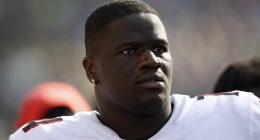
The NHS waiting list could be 3 million people longer than previously thought — with many waiting more than a year, an official report reveals.
The Office for National Statistics said its survey of 90,000 adults in England found 21 per cent were waiting for an NHS appointment, including an operation or scan.
This means that around 9.7 million people — more than one in five — are waiting when the results are extrapolated to the whole population.
However, separate figures published by NHS England state there were 6.3 million people waiting for 7.6 million appointments as of the end of January, with some people needing more than one type of care.
Part of the discrepancy may be because the NHS does not include those waiting for follow-up consultations, with critics previously accusing health chiefs of keeping these people on a ‘hidden waiting list’ that means they can be sidelined as a low priority.
The representative ONS survey also found one in seven respondents who were waiting for an NHS appointment had been waiting for more than a year, whereas NHS England says only one in 20 on their lists have been delayed this long.
According to the ONS figures, this would suggest 1.35 million patients have been waiting longer than 12 months — four times more than the 321,394 stated by NHS England.
Furthermore, the ONS suggests 670,000 people have been waiting 18 months or more, compared with the 14,000 stated by health officials.
NHS England pledged to have ended waits of more than 18 months over a year ago.
Brett Hill, head of health and protection at independent consultancy Broadstone, said: ‘Of particular concern is the wide gap between the data reported in NHS waiting lists and the findings of the ONS survey, which suggests the proportion of UK adults now waiting for medical treatment or advice is far higher than previously understood.
‘With 21 per cent of adults in England now waiting to access healthcare it highlights the huge problems for businesses when it comes to supporting the health of their employees and reducing sickness absence.’
Andrew Gwynne, Labour’s shadow health minister, said: ‘Pull back the cover and the crisis in the NHS is even worse than it appeared.
‘One in every five people in England are stuck on waiting lists, and they are waiting longer than ever before.
‘Rishi Sunak has broken his pledge to cut waiting lists, and now he’s planning to close services and cut doctors and nurses.
‘The longer the Conservatives remain in office, the longer patients wait.’
The ONS also asked the public about their access to GPs and satisfaction with their general practice.
Almost one in 10 people said they had been unable to make contact with their GP the last time they tried to book an appointment, while 7.4 per cent said they were told to call back another day or ring 111 because the practice could not help.
Almost a third of patients said they had found it ‘difficult’ or ‘very difficult’ to secure an appointment while just under half said it had been easy.
Dr Margaret Ikpoh, vice chair of the Royal College of GPs, said: ‘We know how much our patients value the care that GPs and our teams offer, and we share their frustrations when they struggle to access it when they need to.’
An NHS England spokesperson said: ‘The official published statistics on NHS waiting lists actually show 6.3 million patients were on NHS waiting lists as of the end of January and only 4.2 per cent of waits were over a year.
‘Work is ongoing to reduce the longest waits for patients but despite pressures and industrial action, hardworking NHS staff ensured the covid backlog has fallen for four months in a row and 18-month waits are down almost 90 per cent on their peak.
‘In terms of GP care, almost two-thirds of people are happy with their experience, and millions more are being given appointments compared to before the pandemic.’
Source: Mail Online






